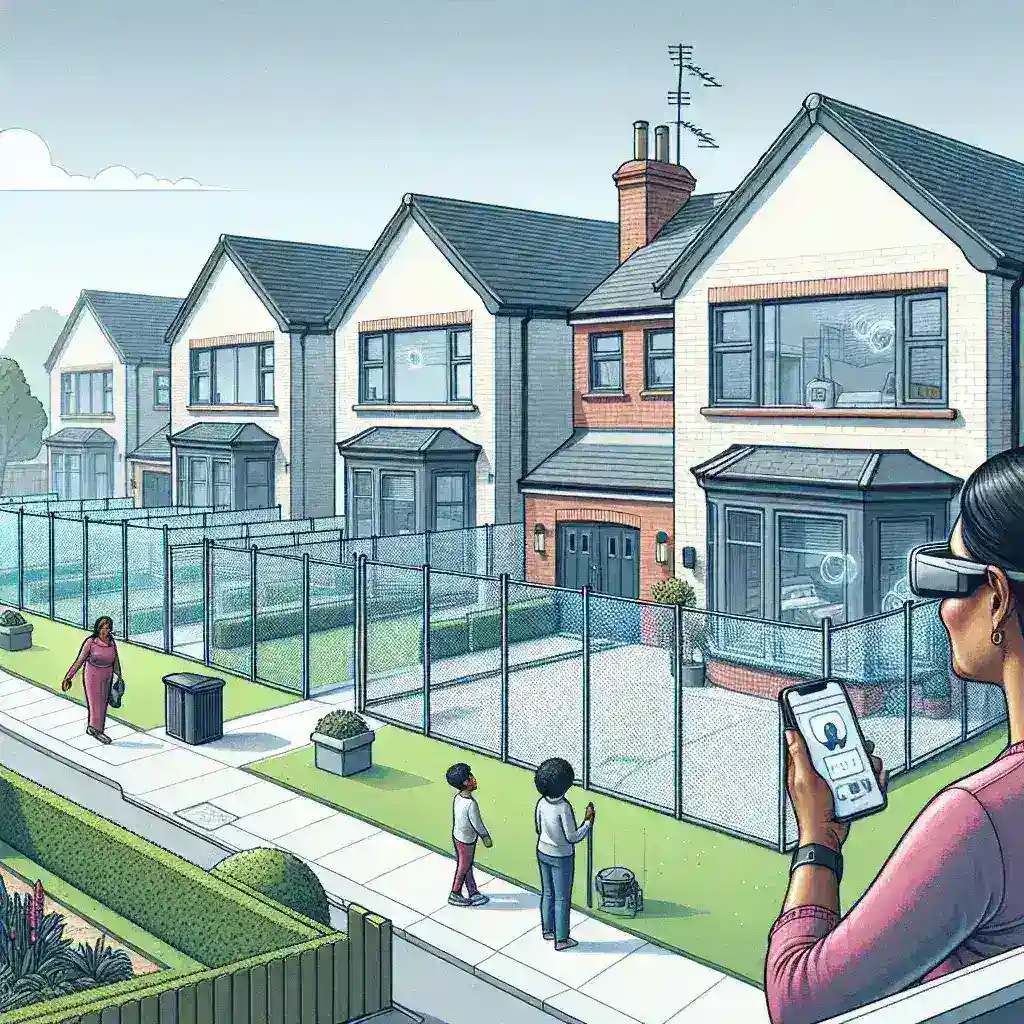The Evolution of Privacy Solutions
In an increasingly connected world, maintaining privacy without compromising aesthetics has become a significant challenge. Traditional fencing solutions often obstruct views and can feel invasive, leading to a demand for innovative alternatives that blend security with seamless design.
Enter Augmented Reality Fences
Augmented Reality (AR) fences are the latest innovation in privacy solutions, offering invisible barriers that provide protection without blocking the view. By leveraging advanced technology, AR fences create virtual boundaries that are both functional and unobtrusive.
What Are AR Fences?
AR fences are digital constructs that use augmented reality technology to create the illusion of a physical barrier. Unlike traditional fences, they do not physically obstruct the landscape but instead utilize devices like smartphones, AR glasses, or specialized equipment to display the fence when needed.
How Do AR Fences Work?
AR fences operate by integrating with GPS and spatial mapping technologies to define virtual perimeters. When a person approaches the boundary, their device detects their location and displays the AR fence, alerting them to the invisible barrier. This system can also integrate with other smart home technologies for enhanced functionality.
Benefits of Invisible Barriers
Unobstructed Views
One of the most significant advantages of AR fences is the ability to maintain unobstructed views. Whether it’s a scenic backyard, a picturesque landscape, or an architectural masterpiece, AR fences ensure that the visual appeal is not compromised.
Enhanced Privacy
AR fences provide a unique approach to privacy. They can be configured to create zones that are off-limits to certain individuals or the public, without the need for physical barriers. This is particularly useful in situations where discretion is desired without drawing attention.
Customization and Flexibility
With AR fences, customization is virtually limitless. Property owners can adjust the boundaries, permissions, and appearance of their virtual fences with ease. This flexibility allows for temporary changes, such as during events or construction, without the need for physical modifications.
Cost-Effective Solutions
Installing traditional fences can be costly, especially over large areas. AR fences reduce these expenses by eliminating the need for materials and labor associated with physical fences. Maintenance costs are also minimized, as virtual fences do not suffer from weather-related wear and tear.
Applications of AR Fences
Residential Use
Homeowners can utilize AR fences to define property lines, keep pets within designated areas, or restrict access to specific parts of their property. AR fences can also enhance security systems by integrating with motion detectors and surveillance cameras.
Commercial Properties
Businesses can benefit from AR fences by controlling access to sensitive areas without installing unsightly barriers. This is particularly beneficial for venues like resorts, golf courses, and event spaces where ambiance is crucial.
Public Spaces
Cities and municipalities can use AR fences to manage crowds during events, protect historical sites, or guide visitors through parks and attractions. The ability to adjust these barriers dynamically makes them ideal for ever-changing urban environments.
Challenges and Considerations
Technology Dependence
AR fences require users to have compatible devices to interact with the virtual barriers. This dependence on technology can be a limitation, especially in areas with limited access to the necessary devices or internet connectivity.
Privacy Concerns
While AR fences aim to enhance privacy, they also raise concerns about data security and surveillance. It is essential to implement robust security measures to protect user data and ensure compliance with privacy regulations.
Legal and Regulatory Issues
The implementation of AR fences falls into a gray area of law in many regions. Property owners and developers must navigate zoning laws, property rights, and regulations related to virtual installations.
The Future of AR Fencing
As technology continues to advance, AR fences are poised to become more prevalent. Improvements in device capabilities, battery life, and software will enhance the user experience and expand the potential applications of invisible barriers.
Integration with Smart Cities
In the context of smart city development, AR fences can play a vital role in urban planning and management. They can provide dynamic solutions for traffic control, event management, and public safety.
Enhanced User Interaction
Future developments may include more immersive experiences, where AR fences provide not just barriers but interactive content. This could include informational displays, advertisements, or personalized messages.
Conclusion
Invisible barriers like AR fences represent a significant shift in how we approach privacy and security. By providing the benefits of traditional fences without the drawbacks, they offer innovative solutions for residential, commercial, and public use. As the technology matures, AR fences may become a standard feature in property management and urban design, blending seamlessly into our environments while enhancing our control over privacy and space.

